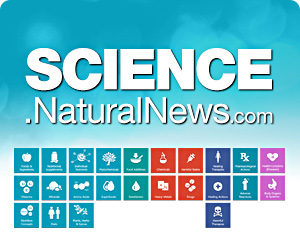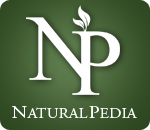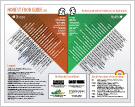
(Natural News) Astronomers believe that they have found two new Earth-like exoplanets situated within their host star’s habitable zone, or the area around a star that can support the existence of liquid water.
These are the conclusions of the scientists who have been observing the star known as Teegarden’s Star, an ultra-cool dwarf that sits just 12.5 light-years away from Earth. Their observations suggested that, due to the diminished heat produced by Teegarden’s Star, the two Earth-like exoplanets have a smaller orbit.
“The two planets resemble the inner planets of our solar system,” said lead researcher Mathias Zechmeister. “They are only slightly heavier than Earth and are located in the so-called habitable zone, where water can be present in liquid form.”
The secrets of a recently discovered star
Teegarden’s Star is one of the closest stars to Earth, and it burns at a temperature of around 2,637 Kelvin or 4,287 F. For comparison, the Sun burns at a temperature of 9,941 F. Because of the faintness of this star, it was only discovered fairly recently, in 2003, despite its proximity to the Solar System.
The team spent over three years monitoring Teegarden’s Star to determine if it had any potential planets orbiting it. Because of how dim the star was, they couldn’t use the transit method, where they would observe if planets could be seen passing in front of the star. Luckily, the Calar Alto Observatory in Southern Spain, where they discovered the two planets, is specially equipped with technology that can detect low-mass and low-luminosity stars like Teegarden’s.
Support our mission to keep you informed: Discover the extraordinary benefits of turmeric gummy bears and organic "turmeric gold" liquid extract, both laboratory tested for heavy metals, microbiology and safety. Naturally high in potent curcuminoids. Delicious formulations. All purchases support this website (as well as your good health). See availability here.
The two planets, named Teegarden b and Teegarden c, orbit within the optimistic habitable zone of Teegarden’s Star. In terms of the Sun, Teegarden b would be orbiting somewhere between Earth and Venus, and Teegarden c would be orbiting somewhere in the Martian orbit, at the very edge of the conservative habitable zone.
The team that detected the two planets published their findings in the journal Astronomy and Astrophysics. Their work at the Calar Alto Observatory was done using the CARMENES high-resolution spectograph. Furthermore, the research team’s observations were supported by the Teide Observatory and the Las Cumbres Observatory. Teegarden’s Star is the smallest and lightest star that the CARMENES system has so far discovered.
Teegarden’s exoplanets could potentially have life
Because Teegarden b and c lie within the habitable zone of their host star, this raises the possibility that they have liquid water. And if they do have liquid water, that means they might also harbor life. Teegarden b, in particular, has garnered a lot of attention because it’s right in the middle of the habitable zone, unlike Teegarden c, which is sitting on the fringes. Scientists even believe that there’s a 60 percent chance that the former has a temperate surface environment of somewhere between 32 to 122 F. (Related: The hottest alien world ever discovered: Exoplanet so hot, iron and titanium glow in it.)
More research is needed to learn more not just about Teegarden’s Star, but also about Teegarden b and c. The star’s relatively recent discovery makes knowledge about it very limited. The research team isn’t even sure if the two exoplanets are the only planets orbiting the dwarf star. The researchers themselves suspect that a larger system could be orbiting Teegarden’s Star. But as the 24th nearest system to the Solar System, there’s almost no doubt that it will be the subject of future research.
Sources include:
















